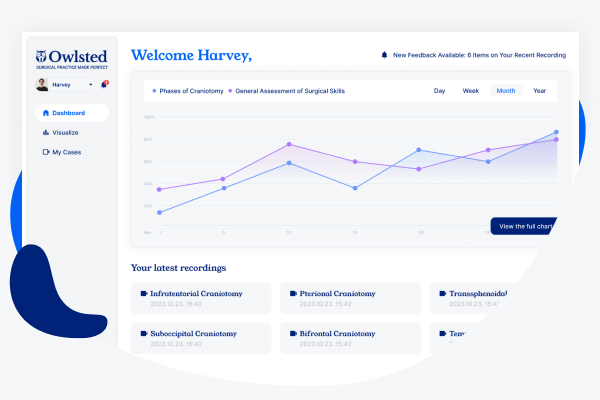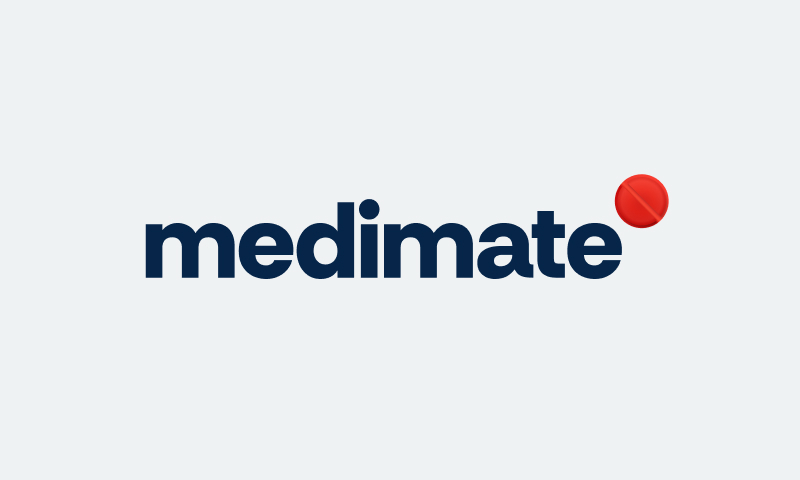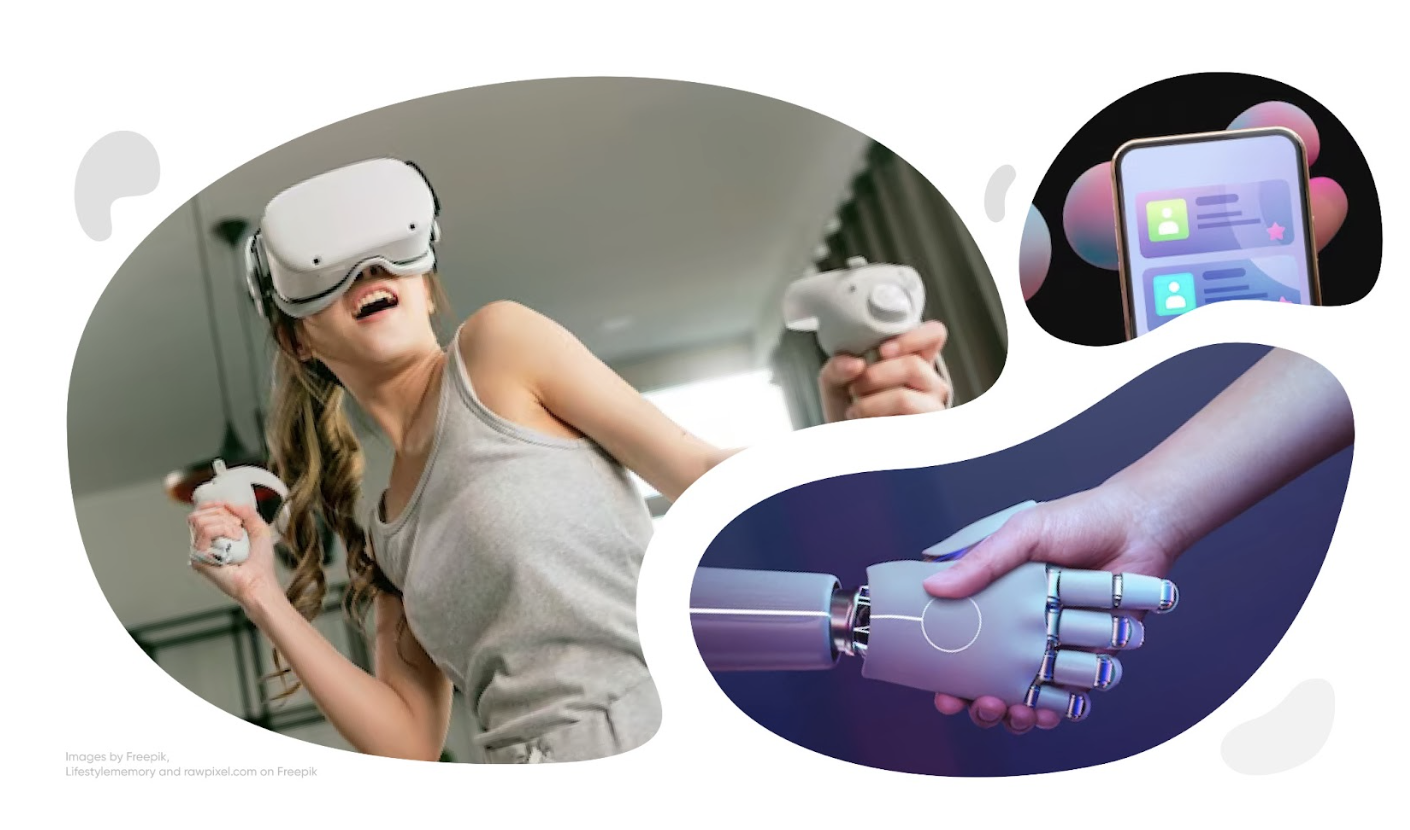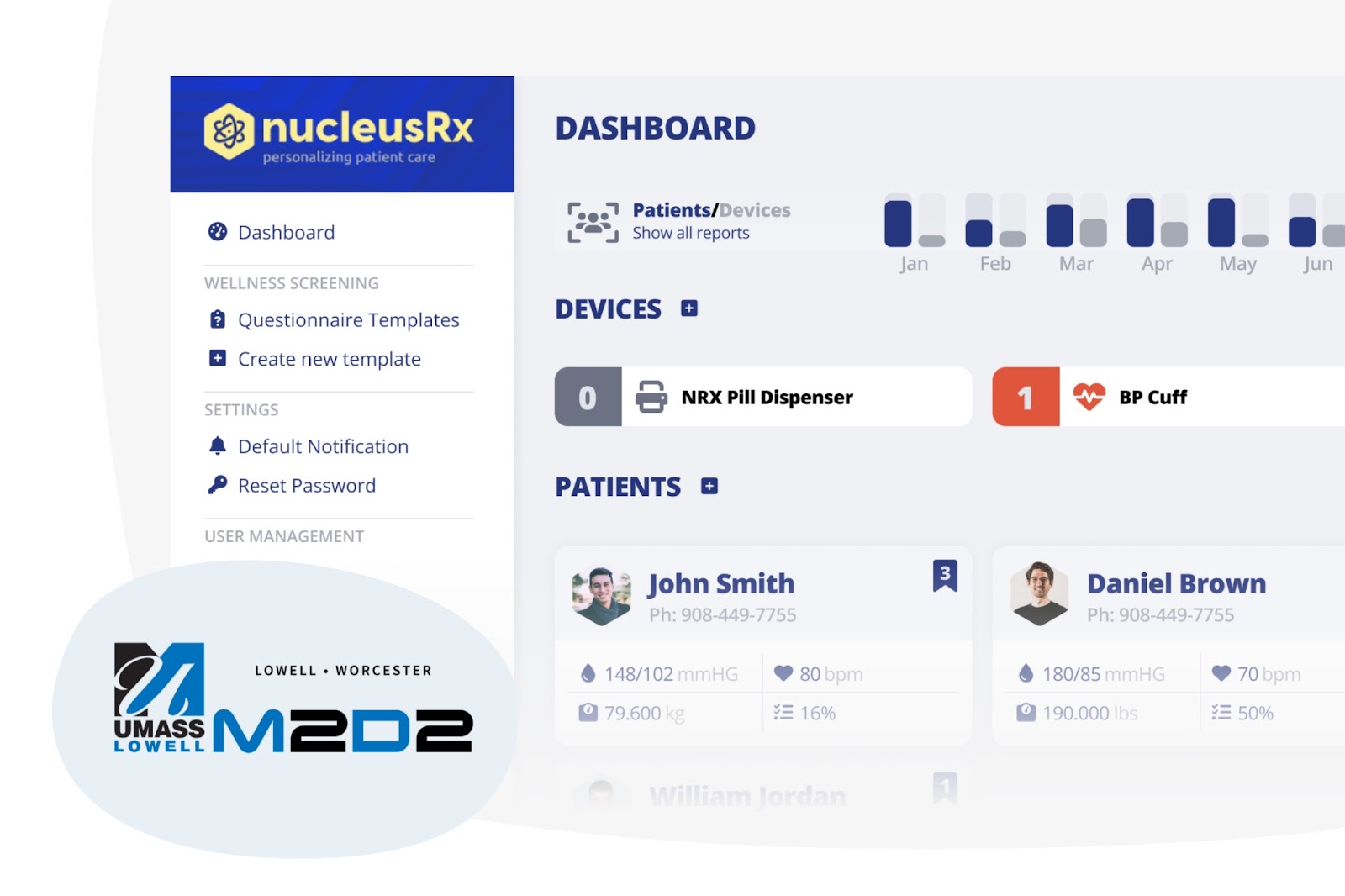Health data integration made easy: Epic, Cerner, and more

Introduction
When building online software or applications, it often arises that we desire to utilize data from an existing system. In the case of a healthcare project, this typically involves health- or medical management software. Given this potential use case, we conducted tests to explore the integration of such systems into our pilot project.
Epic and Cerner stand out as two of the most popular healthcare management platforms (as discussed in our previous blog post). To assess the process of healthcare data integration, we utilized these systems along with Google Health’s solution.
We tested them in Bubble.io
Bubble.io is the most liked and used no-code tool now. It offers numerous amazing opportunities for pilot- and small web-based applications. Thanks to its API Connector, it offers easy integration. It helps you make API connections to other apps and data easily.
As this platform is very flexible when it comes to creating an app with other data connections, it’s a great choice for apps with a healthcare focus. Let’s see how we can apply it to our test project!
We tested how this integration works in Bubble. We updated our earlier Bubble.io project (you can read our earlier case study here). In summary, to test Bubble and its solution, we created a fictional web project called Dr. Bubble. We already updated it in a second phase with the power of AI (ChatGPT integration).
This time, we integrated the two most popular EHR systems: Epic and Cerner. On top of that, we checked out how can we utilize a Google Health connection as well.
1. Epic EHR
Epic is an American privately held healthcare software company. According to the company, hospitals that use its software held medical records of 78% of patients in the United States and over 3% of patients worldwide in 2022. Epic primarily develops, manufactures, licenses, supports, and sells a proprietary electronic medical record software application, known in whole as ‘Epic’ or an Epic EHR. (Source)
EPIC offers a wide range of functionalities, providing us with a wealth of helpful data derived from historical usage and statistics. This data can be highly valuable when building a reservation system that utilizes reservation information or when granting access to visitors for making reservations.
Epic EHR’s main points from a development view:
- Epic has a huge API library with a well-documented wiki-page
- The integrations are sometimes complex, thanks to the platform’s huge code system and user validation. Sometimes we get non-descriptive error messages.
From the development perspective, creating a secure connection with Epic needs more time (in exchange, later, after getting to know the process, we have an easier job). In Dr. Bubble, we needed to provide an option for our users to connect their Epic profile to our application. To achieve this, we had to implement an OAuth 2.0 flow with Epic. The documentation provided by Epic is extensive and detailed, but the development process requires due attention.
EPIC’s process is transparent, but the weak point of its solution is the lack of a proper debugging method. The error responses do not always correspond to the actual error, which can lead you in the wrong direction. However, once you understand how the flow works, using the APIs becomes comfortable, and you don’t need to spend too much time troubleshooting.
Through the APIs, you can query all the necessary information about the patient, including their current medications, care plans, surgeries, and more.
2. Cerner EHR
Oracle Corporation is an American multinational computer technology corporation headquartered in Austin, Texas. In 2020, Oracle was the third-largest software company in the world by revenue and market capitalization. The company sells database software and technology (particularly its own brands), cloud-engineered systems, and enterprise software products. On December 20, 2021, Oracle announced the acquisition of Cerner, a health information technology company. (Source)
Cerner’s huge functionality is similar to Epic in some ways. If we use this Oracle-developed solution, we can use these benefits in our system, too thanks to their API-based integration.
Cerner EHR’s main points from a development point of view:
- Cerner EHR offers API connection for different parts of the app and it has a huge app gallery, too: App Gallery.
- Great developer community and well-documented test data.
One of the key advantages of working with Cerner is the plenty of documentation resources provided, where all the key pieces of information can be found for implementing their software. Another great help was their engaged developer community, where we were able to find answers to our questions during the development phase. Testing the product was easy thanks to the numerous uploaded test data we could work with.
Integration to our project
Epic and Cerner are two of the most used EHR platforms. We used both in our test project to see what are we capable of creating with them and if we can implement the functionalities we imagined. In an application, it is not required to use multiple EHR platforms, you can choose to go with Epic or Cerner, and the development should not be a problem.
If you use these or any other EHR system, and you want to integrate it into your project, we are happy to help! Reach out to us with confidence:
Let’s try it in our pilot-project
Now we have completed the 3rd phase with Cerner EHR integration. The objective of this phase was to test how we could connect EHM data to our web-based app and utilize it.
Additionally, we have a third option for communication between different types of services. We integrated Google Health as well, enabling us to collect and use the user’s weight, height, and physical activity data. We established 3 segmented communications between these tools: first, we collect the health data, store it, and then send it to Epic. Next, we search for the patient’s historical data, including information about their previous visits (doctor’s name and date). Subsequently, we compare this data with the information in our test app and assist in finding the next available times for this doctor.
Based on this information, users can reserve their next appointment with their previously visited doctor. During the reservation process, they can also add some extra feedback, which we will send to the selected doctor along with the next reservation date for the Epic EHR.
As a result of this integration, we have developed the following functionality:
- Collect health data from Google Health
- Send the user’s information and health data to the EHR systems
- Check the user’s reservation history within EHR based on this data
- Check available doctor(s) in our test project based on this information, and prioritize these EHR doctors at the top of the filtered list
- Send the user feedback for the doctors available in EHR as well
Here is a flow chart depicting these steps:
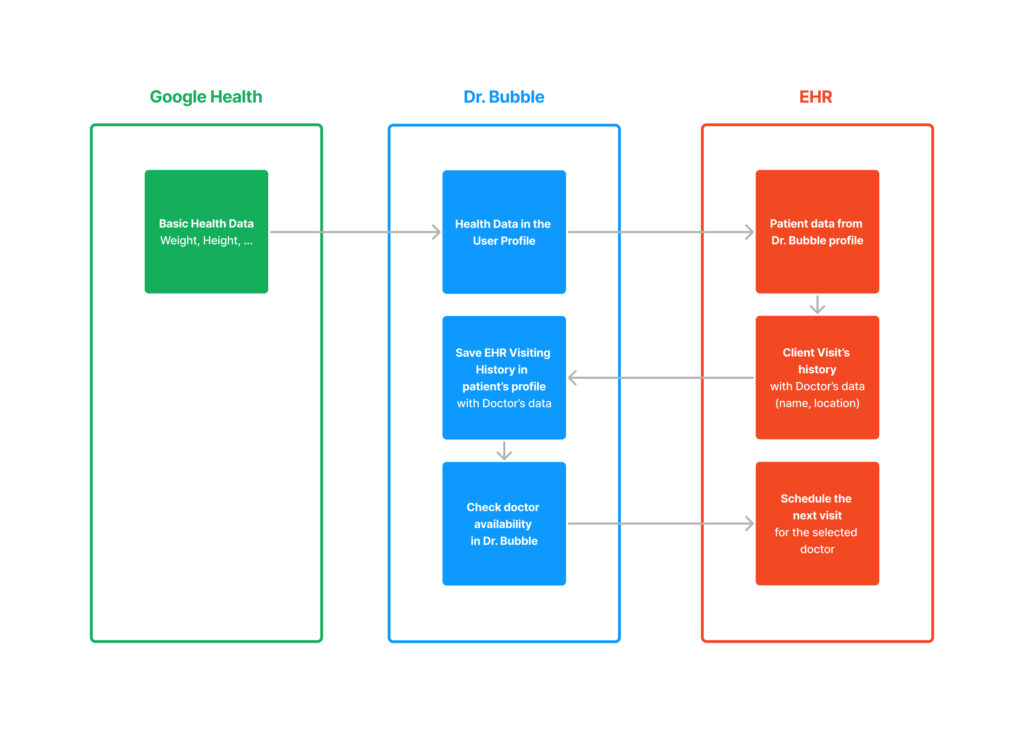
And here you can find the video screen about the test version of our project:
Thanks to these integrations, you can easily utilize your Epic or Cerner data (if available) for making reservations. As a result, you have to do less searching, and you can more effectively find your preferred doctor again. The combination of this function with AI creates an app that is highly user-friendly, allowing you to search for doctors solely based on your previous reservations.
Users can effortlessly access their own historical data, which proves very useful in viewing previous visits without having to navigate to the EHR system. This historical data enhances the search experience for future reservations. Additionally, users have the option to provide feedback based on their earlier visits to the doctor, and this data is collected and sent through this integration.
This functionality, along with the power of AI and the benefits from Google Health, greatly enhances the user experience and makes the app more informative and appealing.
The conclusion
From a technical perspective, we successfully achieved a smooth integration and API communication within Bubble, and the test flow proved to be very clear. As we move forward, further testing and technical configuration will be necessary to ensure the integrated solution’s reliability and efficiency.
On the business side, the opportunities presented by this integration are immensely valuable. By having the entire communication flow streamlined within this service, we can seamlessly save, send, and utilize this rich dataset. Consequently, the functionality becomes more sophisticated, and the overall usability is enhanced, providing users with a cleaner and more comfortable experience.
From the UX/UI standpoint, the AI-based functionality and UX flow receive a significant boost with this helpful addition. It seamlessly fits into this specific use case, effectively expanding our app’s capabilities with minimal user input. This aligns perfectly with our goal of maintaining an easy-to-use app, resulting in an excellent final product.
If you have a similar project or utilize Epic EHR or any other healthcare platform, we encourage you to reach out to us. Our team is more than willing to assist you in creating a user-friendly use case and implementing various types of integration that suit your needs.

